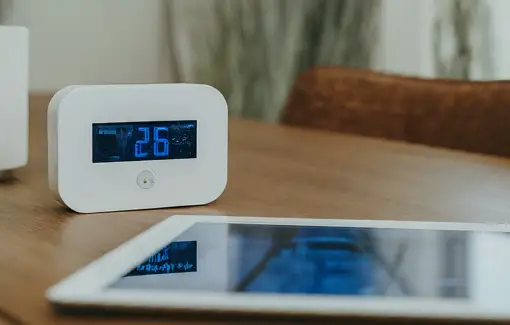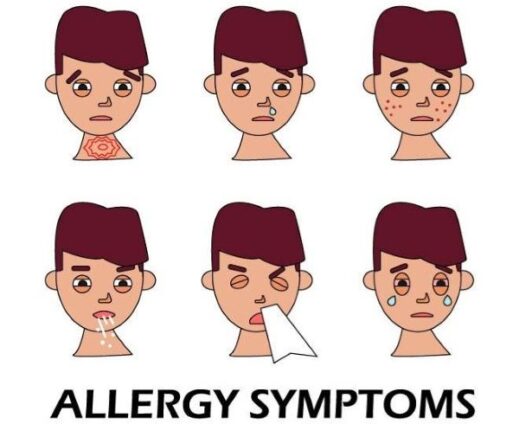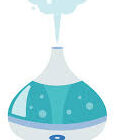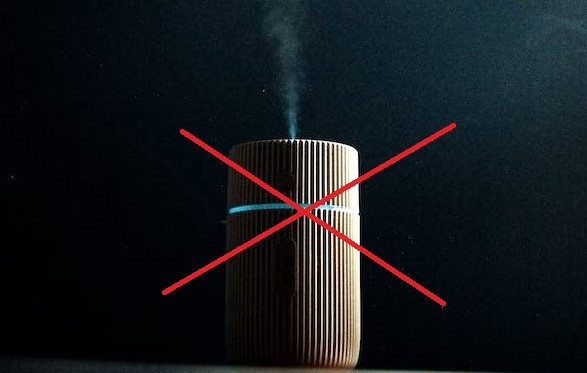When Should You Not Run a Humidifier?
Do you know there are instances when you should not use a humidifier? But before we get to those, I want to give you an idea of what this wonderful device does.
A humidifier will break down water into tiny droplets using ultrasonic vibrations and pump them into the air as mist. This mist is absorbed by the drier air in the room, raising the humidity level.
A warm mist humidifier will boil the water in the reservoir and release it as vapor or warm mist.
Other types, such as mini atomization humidifiers pass water under high pressure through nozzles with multiple orifices to create a constantly flowing fine mist.
Thus, you can see that a warm mist or cool mist humidifier can be a great device to have around your home. However, you should not use it all the time.
Keep reading as we see instances when you should not run a humidifier in your home:
1. When the humidity is already above 40%

If this is the humidity level in your house, it is the perfect humidity level for sleeping, and for the rest of the house.
While an ideal humidity level can vary depending on factors like personal preference and health conditions, most experts recommend keeping it between 30% and 50%.
Exceeding this range, especially going above 50%, can create problems like:
Mold and mildew growth: These unwanted guests thrive in damp environments, and a humidifier adds excess moisture that can exacerbate their growth. This can lead to mold toxicity symptoms such as respiratory problems, allergies, and other health concerns.
Dust mite proliferation: Similar to mold, dust mites thrive in humid environments. If you or someone in your household suffers from dust mite allergies, a humidifier can worsen symptoms.
Structural damage: Excess moisture can damage furniture, walls, and ceilings, leading to peeling paint, warped wood, and even structural issues.
Tip: Invest in a hygrometer to accurately measure your home’s humidity level. Most hardware stores and online retailers sell them.
2. When you have mold in the house
If you already have a mold problem, adding a humidifier is like pouring gasoline on a fire.
The increased moisture will only fuel the mold’s growth and spread, exacerbating the problem and potentially posing health risks.
You need to solve the existing mold issue through proper remediation before considering using a humidifier again.
Black mold is toxic to your health. It is also indicative of high indoor humidity, so when you see the fungus, you really want to run a dehumidifier instead of a humidifier.
3. When you have allergies

If you have asthma, running a humidifier might make it worse and cause serious attacks.
Of course, asthma attacks are one of the signs of sleeping in a dry room, but still, over-humidifying the air doesn’t help either.
While humidifiers can sometimes help with certain allergies, they can also worsen others. As mentioned earlier, increased humidity can trigger dust mite allergies.
Also, if you’re allergic to mold, a humidifier will worsen your symptoms by promoting the growth of this fungus.
If you have an allergy-prone person in your household, talk to a doctor first before using a humidifier.
4. When you haven’t cleaned your humidifier properly
Humidifiers, like any appliances that deal with water, can easily become breeding grounds for bacteria and mold if not cleaned regularly.
Inhaling these contaminants can trigger respiratory problems and allergies, negating any potential benefits the humidifier might offer.
Make sure to follow the manufacturer’s humidifier cleaning instructions diligently.
If you suspect you have bacteria and mold in the tank, use white vinegar and water to clean it.
After cleaning the unit, avoid using tap water in the humidifier. Rather, only use distilled water, which is completely mineral-free.
If you must use tap water, use a demineralization cartridge in the humidifier.
5. When you don’t have a hygrometer
The thing is, many humidifiers do not come with built-in humidistats, so you never actually know when it has reached your desired humidity level.
If this is the case, you should avoid running the unit until you get a hygrometer. That way, as soon as the desired humidity level is achieved, you can switch the unit off.
Using a humidifier without knowing the humidity level is like driving blindfolded. You might end up creating more problems than you solve.
Having a hygrometer allows you to monitor the humidity and adjust the humidifier settings accordingly.
Frequently Asked Questions
Can I use essential oils in my humidifier?
While some people find the scents calming, adding essential oils to humidifiers can damage them and potentially release harmful volatile organic compounds (VOCs) into the air. It’s generally not recommended.
What type of water should I use in my humidifier?
Distilled water is best as it minimizes mineral buildup and reduces the risk of white dust emission.
How often should I clean my humidifier?
Follow the manufacturer’s instructions, but generally aim for weekly cleaning to prevent mold and bacteria growth.
Can a humidifier help with my baby’s congestion?
While it might offer some relief, consult your pediatrician before using a humidifier with a baby. Over-humidification can be harmful to infants.
Are there any health risks associated with using a humidifier?
When used correctly and maintained properly, misters are generally safe. However, improper use can lead to mold growth in humidifiers, mineral buildup, and the release of contaminants. All these can trigger respiratory problems.
Wrapping it up
If you live in a place that experiences the extremes of winter and summer, you need to invest in a humidifier and dehumidifier.
However, buying these, including a Levoit air purifier when needed, is one thing, and knowing when to use it is another.
Only use the unit if the humidity level drops below 30%, 40%, or 50%, depending on your needs.
Always remember that high humidity is bad, for your health, your paintings, carpets, furniture, books, and so on. High humidity is bad for electronics too.
Thus, keep an eye on the hygrometer, and as soon as the humidity level reaches 50%, switch it off.

